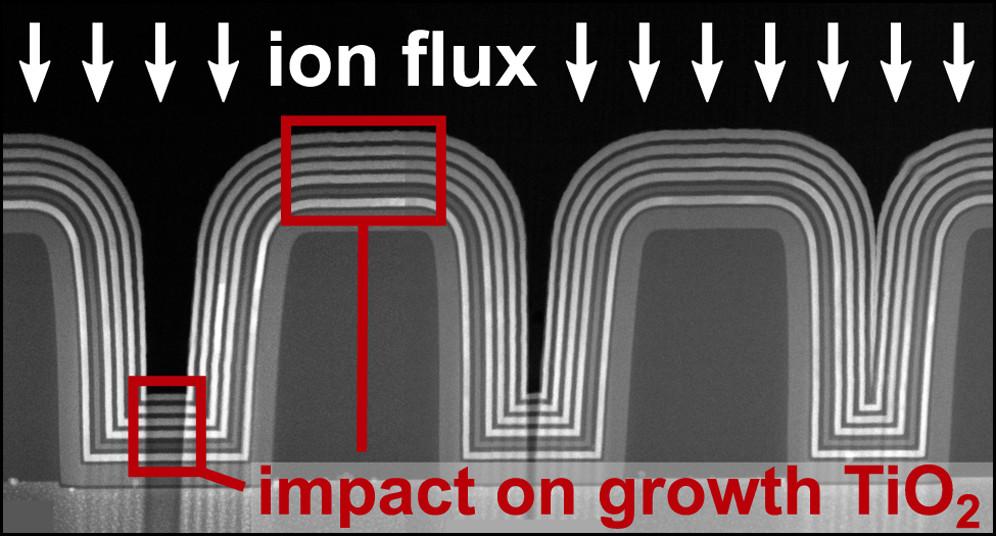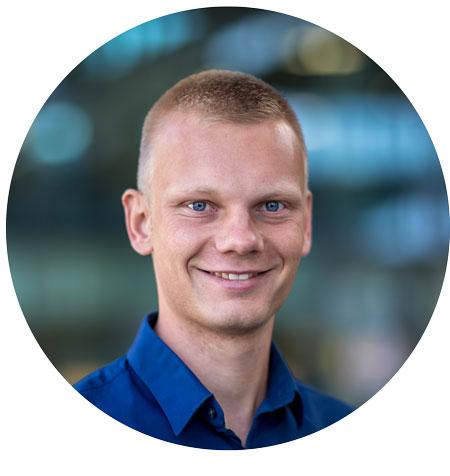 Part of the Oxford Instruments Group
Part of the Oxford Instruments Group
Expand
Collapse

For over 15 years, we have collaborated with Eindhoven University of Technology (TU/e) and together we continue to make significant progress in Atomic Layer Deposition (ALD) research which is one of the most rapidly evolving techniques used in many applications of nanofabrication.
We are very pleased to present the research projects of two PhD students from TU/e who have used Oxford Instruments’ FlexAL ALD system featuring a remote inductively coupled plasma source, enabling high-quality deposition. Using advanced plasma ALD technology, Karsten Arts has achieved conformal deposition on high aspect ratio features and Marc Merkx has achieved highly selective growth of Titanium Nitride (TiN).
Download Case StudyKarsten Arts has focused on the influence of ions on film conformality during the plasma‑enhanced ALD process. Film conformality can be challenging to achieve, especially in 3D nanostructures with deep trenches and high aspect ratios, with the thickness uniformity of the deposited film being very important for many applications.
Atomic layer deposition is renowned for its ability to cover 3D nanostructured surfaces with extremely high aspect ratio and simultaneously achieve precise control in material properties.
As Karsten has observed even under mild plasma conditions the influence of ions can be significant, affecting the film conformality obtained on 3D nanostructures. However, under the right plasma conditions and energy of ions, Karsten and the research team have accomplished deposition of TiO2 with high film conformality and process reproducibility, using Oxford Instruments’ FlexAL system.
FlexAL ALD enables researchers to precisely control the ion energy and flux of ions, crucial factors that influence the film growth of silicon oxide and titanium dioxide.
Read the full Case Study
Image1 of different trenches, with layers of TiO2 (white layers), SiO2 (dark grey layers), and a single layer of Al2O3, all grown by plasma ALD using an Oxford Instruments’ FlexAL ALD system.

1. Impact of Ions on Film Conformality and Crystallinity during Plasma-Assisted Atomic Layer Deposition of TiO2. Source: 10.1021/acs.chemmater.1c00781
Marc Merkx has focused on area-selective deposition during ALD which enables production to reduce lithography steps, meaning a more simplified process, and elimination of alignment issues that might be caused after lithography.
Marc and the research team achieved highly selective growth of titanium nitride (TiN), an important conductive material for application as diffusion barrier and contact material for instance. TiN was deposited with Oxford Instruments’ FlexAL ALD system, achieving high selectivity on dielectric surfaces (SiO2, Al2O3) without using any patterning.
As Marc states, “One of the greatest advantages of FlexAL system is the plasma capabilities”. Oxford Instruments’ FlexAL offers maximum flexibility in the choice of precursors, process gases and hardware features and provides remote plasma for low damage plasma ALD combined with thermal ALD in one deposition chamber.
Read the full Case Study
Image2 shows Area-selective ALD of TiN2 , using an Oxford Instruments’ FlexAL ALD system.

2. Area-Selective Atomic Layer Deposition of TiN Using Aromatic Inhibitor Molecules for Metal/Dielectric Selectivity. Source: 10.1021/acs.chemmater.0c02370